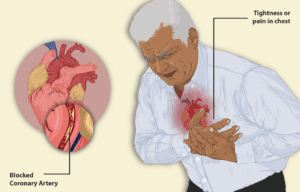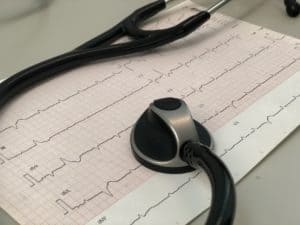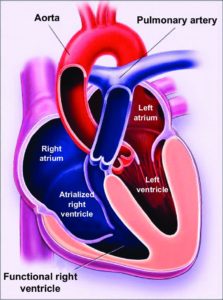Hypertensive emergency
It is an emergency where high blood pressure (≥ 180/120) causes target organ damage.
- Target organs can be the brain, renal system, eye, heart, etc.
Hypertensive urgency
Blood pressure ≥ 180/120 with no evidence of target organ damage.
Malignant hypertension and accelerated hypertension
The terms malignant hypertension and accelerated hypertension have been replaced by hypertensive urgency or hypertensive emergency.
Hypertensive encephalopathy
It is a hypertensive emergency that causes rapid and transient brain dysfunction. The brain dysfunction is clinically or radiologically evident. Clinical features are headache, nausea, vomiting, confusion, and stroke-like syndromes. Radiological evidence may be vascular edema.
All of the above are called hypertensive crises.
PRES syndrome
PRES refers to posterior reversible encephalopathy syndrome. PRES is less commonly known as “reversible posterior leukoencephalopathy syndrome” (RPLS). However, both terms may be misleading, because:
- Brain injury is not always reversible.
- Involvement is not always localized to the posterior regions of the brain, nor the white matter.
PRES is a clinicopathologic diagnosis not discovered until brain imaging modalities such as CT and MRI were widely applied.
PRES often occurs in the context of a hypertensive emergency, in which case PRES is equivalent to “hypertensive encephalopathy.”

Essential hypertension
Persistently raised blood pressure (BP) with no secondary cause identified.
Benign essential hypertension
When essential hypertension remains in its early stages for a prolonged period and without a specific known cause.
Secondary hypertension
When the cause of persistently raised blood pressure is known, common causes are PKD, CKD, OSA, Pheochromocytoma, Cushing syndrome, etc.
Isolated systolic hypertension
It happens when the diastolic blood pressure is less than 80 millimeters of mercury (mm Hg) and the systolic blood pressure is 130 mm Hg or higher.
Resistant hypertension
It is defined as blood pressure that remains above 140/90 mmHg despite optimal use of three antihypertensive medications of different classes, including a diuretic.
Pulmonary hypertension
Pulmonary hypertension is high blood pressure (mean pulmonary artery pressure > 25 mmHg) in the blood vessels that supply the lungs (pulmonary arteries). About 1% of people globally have pulmonary hypertension. Pulmonary hypertension makes the heart work harder than normal to pump blood into the lungs.
Portal hypertension
Portal hypertension is elevated pressure in your portal venous system. The portal vein is a major vein that leads to the liver. A pressure gradient of 6 mmHg or more between the portal and hepatic veins (or inferior vena cava) suggests the presence of portal hypertension in most cases. Portal hypertension can cause ascites, varices, and hepatic encephalopathy.



